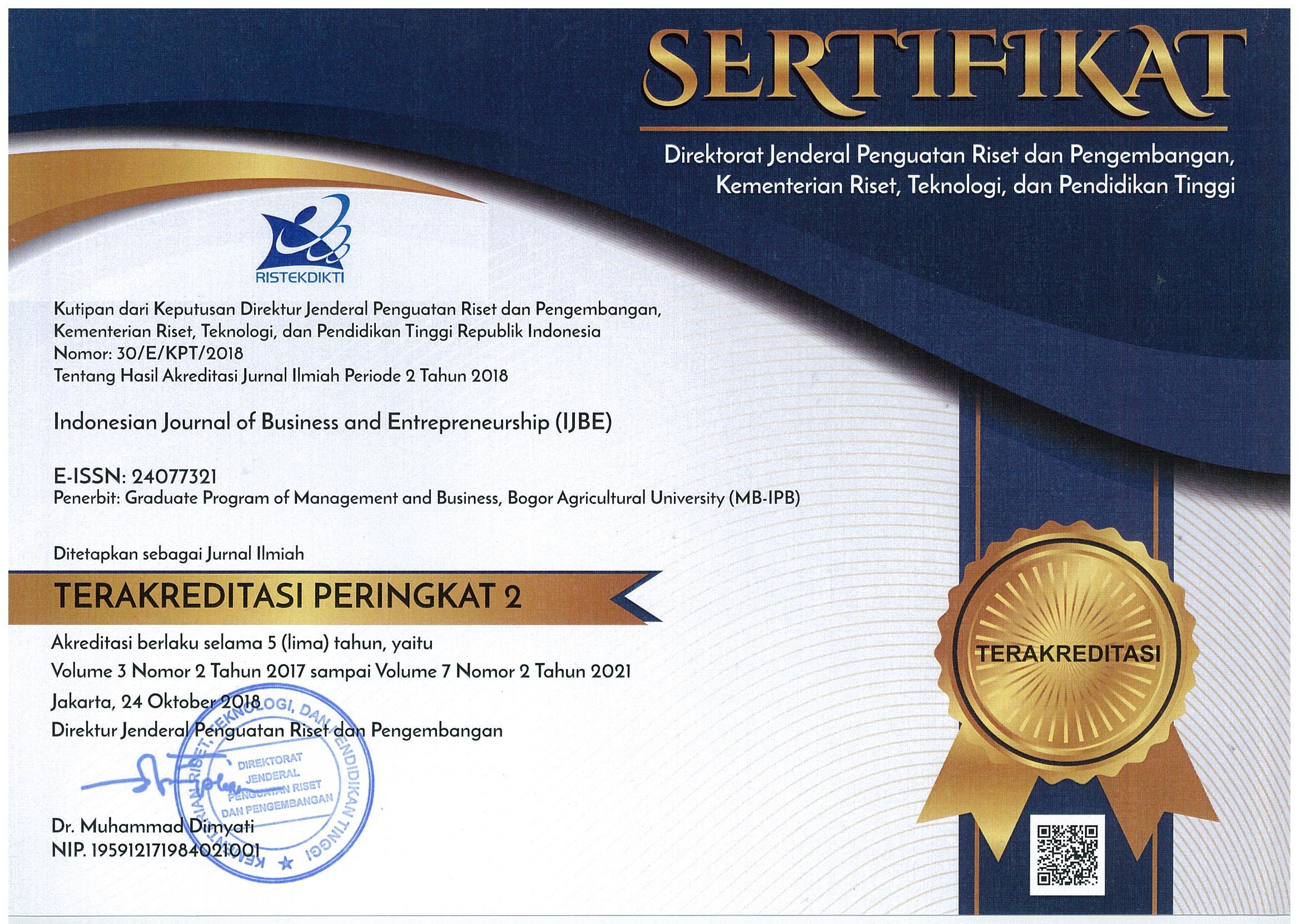Superfood Business Development Strategy (Case Study Rumah Kurma Albarakat)
Abstract
Background: Superfood is one of the growing businesses since 2021. This research focuses on Rumah Kurma Albarakat (RKA), a business that sells superfood products and is currently experiencing fluctuations in revenue due to intense competition.
Purpose: The purpose of this research is to identify RKA's internal and external factors, analyze customer perspectives on RKA’s products and brands, and determine alternative strategic priorities that RKA can implement.
Design/Methodology/Approach: The analytical tools used are the internal factor evaluation-external factor evaluation (IFE-EFE) matrix, internal-external (IE) matrix, strength-weakness-opportunity-threat (SWOT), and quantitative strategic planning matrix (QSPM) as part of the three-stage formulation analysis as well as 7P analysis to support strategy formulation.
Findings/Result: The results obtained twelve alternative strategies with the main priority is amplifying branding through collaboration with other businesses or influential figures and content development on social media. The second priority is to present a new shopping atmosphere or experience for RKA customers.
Conclusion: RKA's primary internal strength lies in its commitment to maintaining product quality and consistently conducting promotional activities. However, a weakness of RKA is its failure to record net profits. Priority alternative strategies that RKA can implement include strengthening its branding through collaborations and content, introducing new atmospheres or experiences for customers during their shopping experiences at RKA, and boosting social media traffic by enhancing interaction with the audience.
Originality/value (state of the art): Through a comprehensive methodology utilizing analytical tools like the IFE-EFE matrix, SWOT analysis, and QSPM, the research identifies RKA's internal strengths in product quality and promotional efforts, juxtaposed against the weakness of unrecorded net profits. Twelve alternative strategies are proposed, with a primary emphasis on collaborative branding and social media content development, followed by the strategic initiative to enhance the shopping experience. This integrated approach positions RKA to navigate market challenges and foster sustained growth in the competitive superfood landscape.
Keywords: customer perspectives, development strategy, alternative strategies, superfood, three-stage formulation analysis








